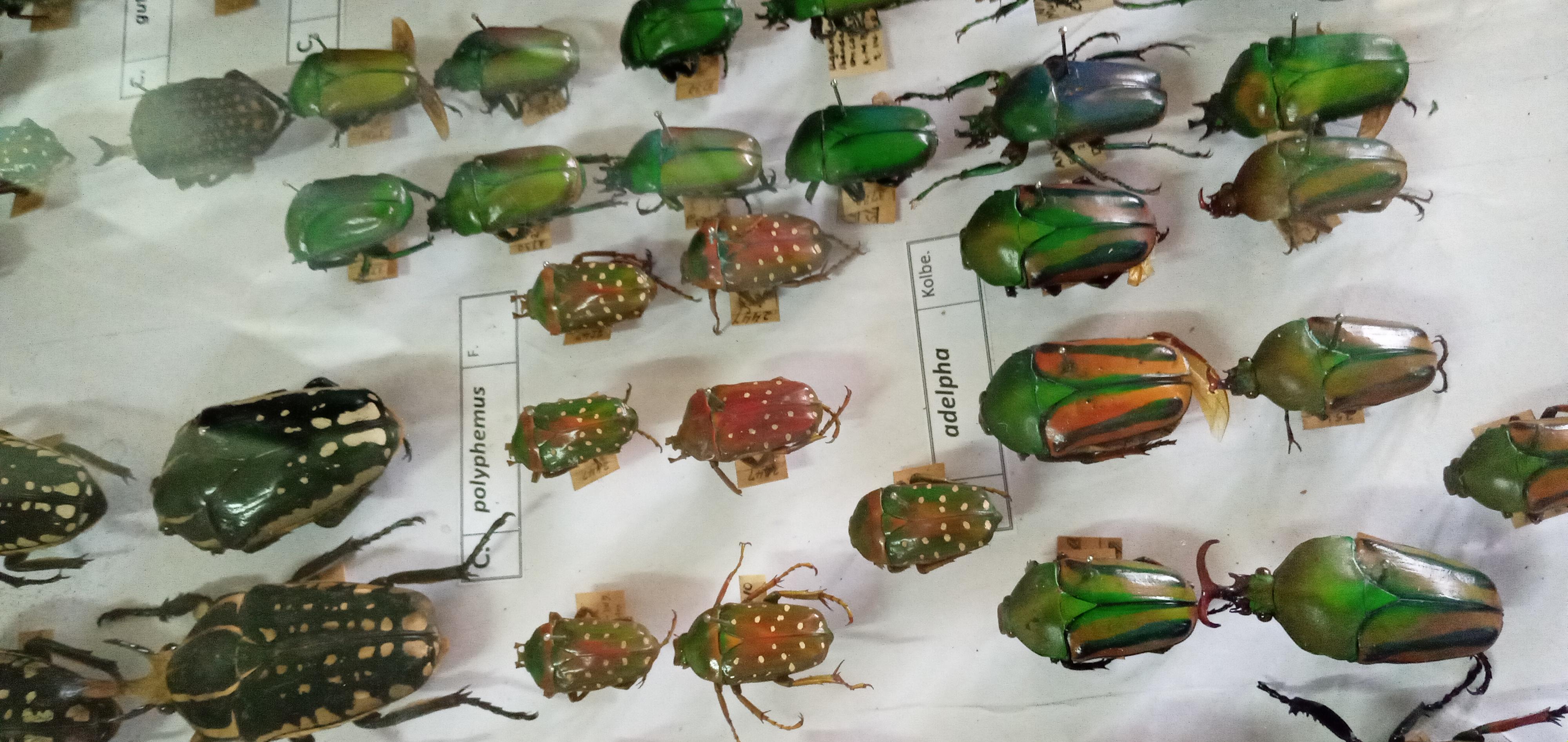Prime
Beneficial insects can help farmers control pests

Preserved insects on display at the museum. Photo/Lominda Afedraru
What you need to know:
- The most important pollinators are bees, beetles, butterflies and other useful flies. Insects therefore contribute to plant diversity and affects animal biodiversity through pollination indirectly.
When we think about infectious insects on farmers crops, we probably think of the troublesome little pests feasting on the fields and orchards.
Rightly so, since they can decrease yields, stain the produce and transmit plant diseases but what about the other 95 percent of insects out there that don’t cause trouble.
One might be surprised to find out how much they can actually help in the agricultural production system.
his is the reason scientists at the National Agricultural Research Laboratories (NaRL) at Kawanda are hosting the insect museum with a collection of more than 300 insect species for research purposes.
Background
Recently science experts at NaRL, established the national centre for pest identification and taxonomic studies at the insect museum. Some insect collections are as old as 1909. The collection has been expanded with new species and as of today there are more than 8000 specimen of insects representing 17 orders.
Insect species
The curator of the museum, Alban Patrick Lugoloobi explaining about the importance of insects noted that this was an initiative by the British to collect both useful and harmful insects especially in the agriculture sector.
Not so many Ugandans know about the insect museum because it is mainly serving the interest of researchers pursuing courses in agriculture particularly those specialising in entomology.
Insect orders
Hemiptera: This is an order of insects, commonly called true bugs, comprising more than 80,000 species within groups such as the cicadas, aphids, planthoppers, leafhoppers, bed bugs and shield bugs. Orthoptera: Is an order of insects that comprise the grasshoppers, locusts and crickets including closely related insects, such as the bush crickets. The order is subdivided into two suborders caelitera which include grasshoppers, locusts and close relatives and enifera which are crickets and close relatives. More than 20,000 species of this, is distributed worldwide.
Homoptera: These are insects which have piercing-sucking mouthparts and have gradual metamorphosis with the life stages being the egg, nymph and adult. The winged forms include leafhoppers, cicadas (sometimes called locusts), spittlebugs, planthoppers and treehoppers. The plant lice or aphids, include both winged and wingless forms.
Coleoptera insects: This is the largest order in the class of insect with more than 250,000 described species. These are characterised by a pair of hardened front wings and a pair of membranous hind wings. They have chewing mouthparts that may be slightly modified for various functions.
They include various species of beetles, weevils diptera are common insects such as mosquitoes, midges, sand flies, blowflies and the House Fly. Most of the insects we see flying around do so with four wings (two pairs) but dipterans meaning two wings use only one pair.
Insect groups
According to Lugoloobi there are two major groups of insects and they include beneficial insects belonging mainly to homoptera order. Since they have piercing mouth, they can destroy other insects which are pests to crops by piercing the larvae thereby sucking the juice and this leads to death.
This way the harmful insects’ reproduction circle is tampered with thereby eliminating them from the environment. The other group are the harmful insects which are considered pests to crops and animals or anything in the wild, fall army worm, aphids, beetles and insects such as mosquitos which are dangerous to humans and animals fall in this category.
Some of the insects are so tiny that when identifying them to get their features, the scientists use microscopes.
Importance of insects
Amos Wantentena, an entomologist at the museum explained that sufficient food production for a growing human population has become an issue of global concern.
Almost all of the world’s fertile land is currently in use and arable land areas cannot be expanded significantly.
The global challenge is to secure high and quality yields and to make agricultural production environmentally compatible..
Insects have been successful in helping farmers in food production in that insects make up the most numerous group of organisms on earth because they play part in organic matter formation. Relying on available literature, it is stated that insects have been predominantly perceived as competitors in the race for survival. Herbivorous insects damage 18 percent of world agricultural production. Despite this damage less than 0.5 percentage of the total number of the known insect species are considered pests. When it comes to yields in farmer fields, the scientists contend that more than three quarters of wild flowering plant species need insects for pollination and about two thirds of all plant species rely on insects for pollination, the same applies to consumable plants in farmer fields.
The most important pollinators are bees, beetles, butterflies and other useful flies. Insects therefore contribute to plant diversity and affects animal biodiversity through pollination indirectly. For as long as humans practiced crop agriculture, pests have occurred on their crops and insects have been predominantly perceived as competitors in the race for survival.
Signs
Naturalist and co-founder of the EO Wilson Biodiversity Foundation in the US, Edward Wilson, once said, “If insects were to vanish, the environment would collapse into chaos”. According to Dr Annemie Erasmus, researcher in entomology at the ARC Grain Crops Institute (ARC-GCI), crop farmers who see all insects on their lands as pests to be eradicated would do well to heed Wilson’s words. These farmers are likely to find that, on closer examination, many of these insects are beneficial predators that attack destructive pests.




